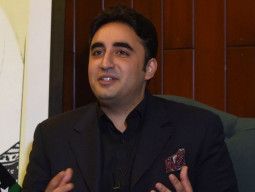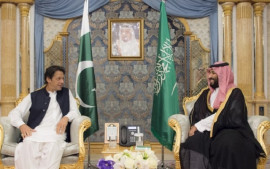
The announcement came following a meeting of the Monetary and Fiscal Policies Coordination Board, which met on Friday for the second time this week. Finance Minister Asad Umar chaired the meeting where State Bank of Pakistan Governor Tariq Bajwa and Minister for Planning Makhdoom Khurso Bakhtiar were also present.
"In principle, the (exchange rate) parity should be at its competitive-enhancing level," stated the finance ministry in a well-drafted statement. "Accordingly, following the latest adjustments, it is now more reflective of economy's medium-term needs and market conditions."
"The board also anticipates that short-term conditions on the exchange rate front are likely to normalise," stated the finance ministry.
Regarding recent changes to the monetary policy, the board was of the view that "the stance is appropriate at current levels given the projections for inflation in FY19 and FY20."
The real interest rate is significantly positive, will help manage aggregate demand and reduce the output gap closer to sustainable levels.
The statement suggests that the government has not accepted the International Monetary Fund's (IMF) demand for steep currency depreciation and hike in interest rate to over 12%. However, the government is walking in the direction suggested by the IMF but it has not accepted the pace of adjustment.
The IMF wants a complete free float of the exchange rate and interest rate far higher than 10%. It now seems that the IMF programme may not be finalised in the short term, which will lead to increased reliance on friendly countries.
The meeting was informed that the oil credit facility from Saudi Arabia would come into effect next month, which would ease pressure on the exchange rate, a senior government official told The Express Tribune.
The finance ministry's statement said the availability of deferred oil payment facility and the recent decline in international crude oil prices were expected to help reduce the pressure in Pakistan's foreign exchange market in the near term. Moreover, bilateral flows would close the financing gap in the current fiscal year.
"These positive developments will build foreign exchange reserves in coming months," the ministry said.
The central bank let the rupee weaken by Rs5 or 3.7% in the past one week and the rupee-dollar parity stood at 138.89 on Friday. This brought the total adjustment to Rs35 or 33.7% since January this year.
The central bank also increased the interest rate by 1.5 percentage point to 10% last Friday. Since January, the total increase in the interest rate has been 4.25%, which is quite substantial.
"The board was of the opinion that present developments in the exchange rate were mainly explained by the market demand-supply gap of dollar liquidity on one hand and more underlying structural impediments on the other," the statement said.
Economic indicators on positive trajectory: PM
Sources said the SBP proposed that flexible exchange rate should be adopted from January 2019 onwards. The new proposal is better than the current managed exchange rate regime but falls short of the IMF's demand for a free float.
The board was apprised that the current account was visibly responding to the measures taken since January 2018. In first four months of the current financial year, non-oil imports dropped 4% compared to a growth of 25% over the same period last year, the finance ministry pointed out.
Foreign exchange: SBP reserves dip 7%, amount to $7.5b
Sources said the board held the view that exports were largely picking up because energy shortages had been addressed. The devaluation of the currency has not yet contributed to a great degree.
Remittances showed a substantial growth in the current fiscal year while exports grew 4%.
The board expected that the Monetary Policy Committee would continue to make data-driven decisions based on macroeconomic fundamentals, predicted the finance ministry.
The board advised authorities to be more forthcoming with the stakeholders in order to explain the homegrown adjustment plan, which seems to be effectively working for stabilising the economy.
While reviewing the fiscal policy, the board noted that fiscal deficit for the first quarter of FY19 turned out to be 1.4% of GDP. It was observed that the impact of fiscal consolidation measures implemented in recent months would be visible from the second quarter.
The finance minister pointed out that there should be sharper focus on fiscal issues. The need for continued effort to ensure revenue generation and expenditure controls was emphasised in the meeting.
Published in The Express Tribune, December 8th, 2018.
Like Business on Facebook, follow @TribuneBiz on Twitter to stay informed and join in the conversation.












































COMMENTS (2)
Comments are moderated and generally will be posted if they are on-topic and not abusive.
For more information, please see our Comments FAQ